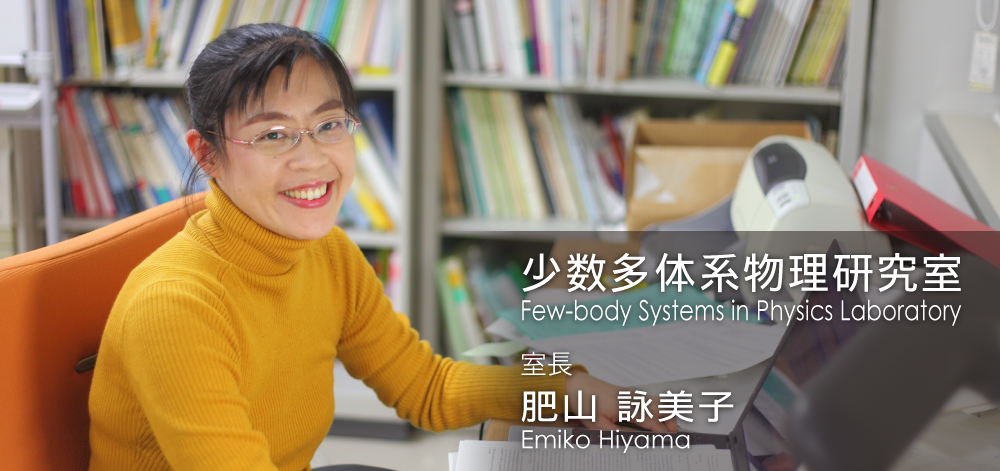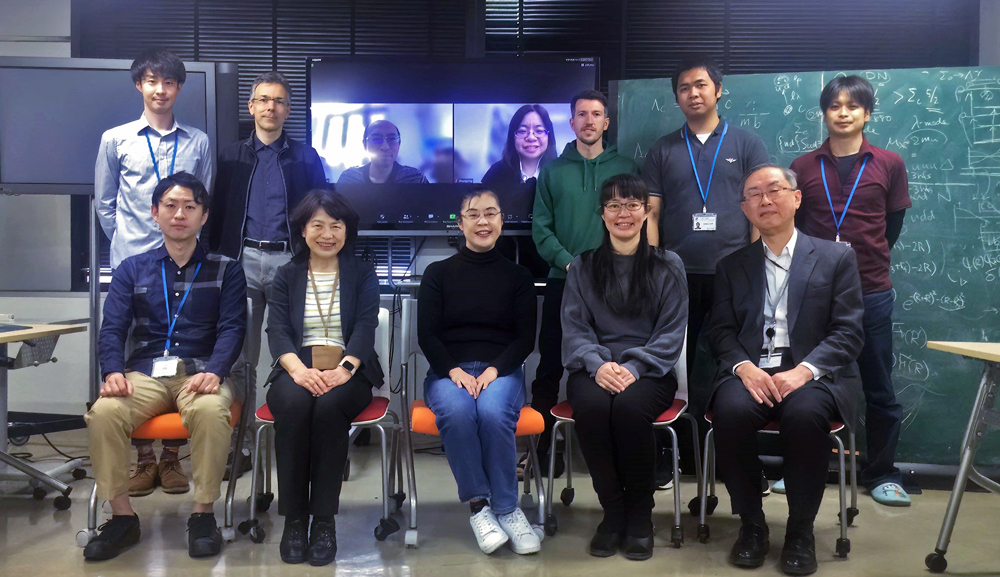Research Facility Development Division
- Accelerator Group
- Accelerator R&D Team
- Ion Source Team
- RILAC Team
- Cyclotron Team
- Beam Dynamics & Diagnostics Team
- Cryogenic Technology Team
- Infrastructure Management Team
- Research Instruments Group
- Automated Operation Technology Team
- BigRIPS Team
- SAMURAI Team
- Data System Team
- Detector Team
- Instrumentation Development Group
Nuclear Science Research Division
- Radioactive Isotope Physics Group
- Nuclear Dynamics Research Group
- Few-body Systems in Physics Laboratory
- Cosmic Radiation Laboratory
- Astro-Glaciology Research Unit
- Nuclear Many-body Theory Laboratory
- RHIC Physics Research Group
- Three-Body Nuclear Force Laboratory
- Meson Science RIKEN ECL Research Team
Accelerator Applications Research Division
Directly under the Nishina Center
Closed Laboratory
Few-body Systems in Physics Laboratory

- 1993年九州大学理学部物理学科卒業
- 1995年九州大学院理学研究科修士課程修了
- 1998年同大学院理学研究科博士課程取得
平成7年4月―平成10年3月まで日本学術振興会特別研究員(DC1)を努めた。 - 1998年理化学研究所ミュオン科学研究室 基礎科学特別研究員
- 2000年高エネルギー加速器研究機構 助手
- 2004年奈良女子大学理学部物理科学科助教授
- 2007年奈良女子大学理学部准教授
- 2008年理化学研究所仁科加速器研究センター
肥山ストレンジネス核物理研究室 准主任研究員
Staff

Research Areas
In our laboratory, we are applying accurate few-body problem calculational method to various fields such as hypernuclear physics, unstable nuclear physics and hadron physics. As a result, we are getting new understanding by solving three- and four-body problem accurately. Especially, we are researching hypernuclear physics. The hypernucleus is composed of a hyperon, neutrons and protons. The research purpose in our laboratory is to understand interaction between hyperon and nucleon in unified way by studying the structure of the hypernuclei from the view points of three- and four-body problems.
Research Subject
- Study of structure of nuclei with strangeness quark from the view points of few-body problem
- Ultra cold atom
- Baryon-baryon interaction based on lattice QCD
- Clustering structure for 12C and 16O
List of Selected Publications
-
D. Suenaga, K. Murakami, E. Itou, and K. Iida:
“Probing the hadron mass spectrum in dense two-color QCD with the linear sigma model”
Phys. Rev. D 107, 054001 (2023). -
E. Hiyama, M. Isaka, T. Doi, and T. Hatsuda:
“Probing the ΞN interaction through inversion of spin-doublets in ΞNαα nuclei”
Phys. Rev. C 106, 064318 (2022). -
D. Yoshida, Y. Kita, T. Shimazaki, and M. Tachikawa:
“A comprehensive theoretical study of positron binding and annihilation properties of hydrogen bonded binary molecular clusters”
Phys. Chem. Chem. Phys. 24, 26898 (2022). -
Z. Yang, G.-J. Wang, J.-J. Wu, M. Oka, and S.-L. Zhu:
“Novel coupled channel framework connecting the quark model and lattice QCD for the near-threshold Ds states”
Phys. Rev. Lett. 128, 112001 (2022). -
Q. Meng, M. Harada, E. Hiyama, A. Hosaka, and M. Oka:
“Doubly heavy tetraquark resonant states”
Phys. Lett. B 824, 136800 (2021). -
L. Happ, M. Zimmermann, S.I. Betelu, W.P. Schleich, and M.A. Efremov:
“Universality in a one-dimensional three-body system”
Phys. Rev. A. 100, 012709 (2019). -
P. Naidon and S. Endo:
“Efimov Physics: a review”
Rep. Prog. Phys. 80, 056001 (2017). -
P. Naidon, S. Endo, and M. Ueda:
“Microscopic Origin and Universality Classes of the Efimov Three-Body Parameter”
Phys. Rev. Lett. 112, 105301 (2014). -
E. Hiyama:
“Gaussian expansion method for few-body systems and its applications to atomic and nuclear physics”
Prog. Theor. Exp. Phys. 2012, 01A204 (2012). -
E. Hiyama:
“Few-Body Aspects of Hypernuclear Physics”
Few-Body Syst. 53, 189 (2012).




